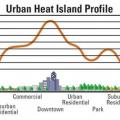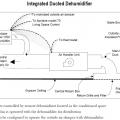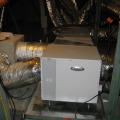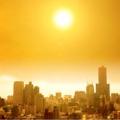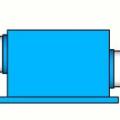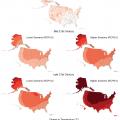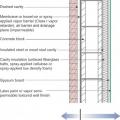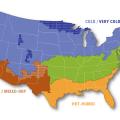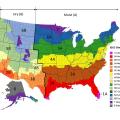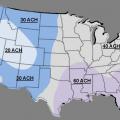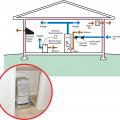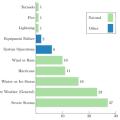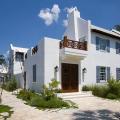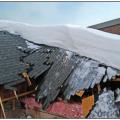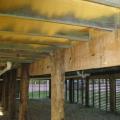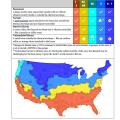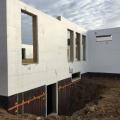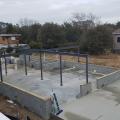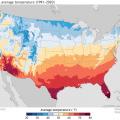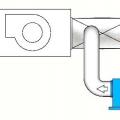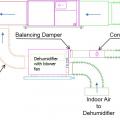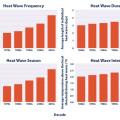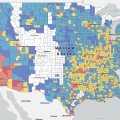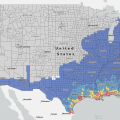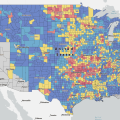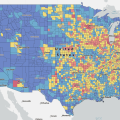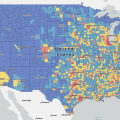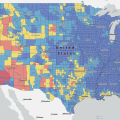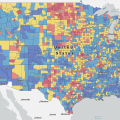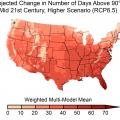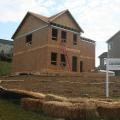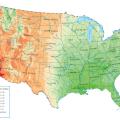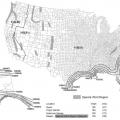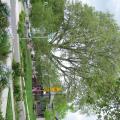Showing results 1 - 48 of 48
A dense concentration of buildings and pavement can create the Urban Heat Island Effect, where local temperatures can be several degrees higher than the surrounding areas
A supplemental dehumidifier is integrated with the home’s HVAC air handler to provide extra dehumidification when needed
Air-Impermeable Insulation for Condensation Control in Unvented Attics, per IRC Table 806.5.
All populated regions in the United States can experience an extreme heat event, whether northern or southern, humid or dry, or urban or rural
An independent ducted dehumidifier draws air from and supplies air to the living space using its own ducts, not ducts that are connected to the HVAC system
Annual average temperatures have increased across North America when comparing the present day to the first half of the last century, and are projected to increase for mid-century and end-of-century relative to the near-present
Brick wall assembly for a hot-humid climate with no Class I vapor retarder and with an air gap (drained cavity) to dissipate vapor driven into the wall by the sun.
Careful landscaping can preserve roof-top solar exposure and provide shading to help control solar gain through windows.
Climate Zones Where a Heat Pump Water Heater can be Installed in Unconditioned Space
Evaporative Cooler Sizing in ACH based on wet-bulb temperatures at 1% summer design conditions
Extreme weather, such as wind, fire, flood, or extreme heat (included in the Severe Weather category above) causes most large electric disturbance events in the U.S (defined as affecting at least 50,000 customers) (data from 2000-2016)
Light-colored roofs and walls and deep overhangs for shade are some of the features used by builders in the hot-humid climate (Source: Alys Beach Construction).
Pier foundations, hurricane strapping, borate- and pressure-treated lumber, and high-density spray foam insulation help protect this New Orleans home from costal flooding and storms (Source: Green Coast Enterprises).
Recommended Installation Locations for a Heat Pump Water Heater Based on the Climate Zone of Home
Right – A dimpled-plastic rain mat was attached to the exterior below-ground walls to help minimize frost damage in cold climates.
Right – Because this home is in a coastal location that may flood the crawlspace is vented and the home is constructed on metal piers.
Right – This modular home is constructed in a factory where climate and ergonomic conditions can be carefully controlled.
Temperatures in deep undisturbed soil at a given location are approximately equal to the annual average air temperature for that location
The dehumidifier draws air from a common area in the house, dehumidifies it, and adds it to the return side of the air handler for conditioning, mixing, and distribution
The dehumidifier draws air from a common area in the house, dehumidifies it, and adds it to the supply side of the central air handler for mixing and distribution
The dehumidifier draws air from both a common area in the house and from outside, dehumidifies it, and adds it to the supply side of the air handler for distribution
The frequency, duration, and intensity of extreme heat events have increased every decade since the 1960s
The number of days per year that the temperature exceeds 90°F is expected to increase throughout the contiguous U.S. when comparing mid-century (2036-2065) to near-present (1976-2005)
This builder employs good water runoff managementpractices to control sediment during construction and to ensure that stormwater drains away from the house after construction.
This house design in the Hot-Humid climate uses a slab foundation, masonry walls, and an Exterior Insulation Finish System (EIFS) cladding.
This map shows average annual precipitation across the United States, as of 2023.
Vegetated swales, pervious pavers, pocket parks, and retention of existing trees all help to minimize runoff and lessen impacts on municipal sewer systems.
